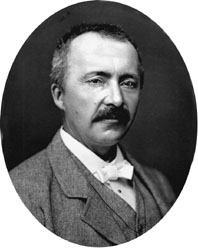

 | Page 1150 |  |
represented an important step in Maya studies, in which art, hieroglyphs, and archaeology were brought together to arrive at an exciting new interpretation of classic Maya society.
Schele’s next book, written with David Freidel, continued in this same vein. Entitled A Forest of Kings, it was an ambitious look at Maya history, combining the archaeological sequence with history gleaned from the glyphs. It did so in such a detailed way that the classic Maya elites almost leaped off the page: for the first time the “mysterious” Maya were becoming more accessible to twentieth-century readers.
Schele was a great popularizer of the ancient Maya. One of her lasting contributions to the field of Maya studies was the development of public workshops on how to read Maya hieroglyphs. Over the years she presented many such workshops, most notably the “Texas Workshops” held in Austin, where she was based. The audience regularly included many of the major scholars in the field of Maya studies, as well as several hundred members of the general public, all of whom were as captivated by Schele’s infectious enthusiasm as they were by new discoveries about the ancient Maya. With another colleague, Nikolai Grube, Schele also conducted workshops for the Maya themselves in guatemala and mexico. This was her proudest achievement: as she put it, she was giving back to the Maya people their own history, which had been taken from them in the years and centuries following the Spanish conquest.
In all her work Schele displayed rare analytic and synthetic skills in making groundbreaking discoveries herself and leading her field to still others. She was not afraid to try new approaches, and with her brilliant insights her efforts were more often than not rewarded. By fostering the same attitudes among her many students, she ensured that her intellectual heritage would survive her untimely death from cancer in 1998.
See also
Maya Civilization; Maya Epigraphy; Mesoamerica
References
Schele, L., and D. Freidel. 1990. A Forest of Kings: The Untold Story of the Ancient Maya. New York: Morrow.
(1822–1890)
Heinrich Schliemann was born in northern Germany and became a sailor, shopkeeper, and merchant; he taught himself fluent French, Dutch, Greek, Russian, and English. A short visit to California in the gold rush days and a longer period trading in russia consolidated his personal fortune, and he began to travel extensively and to write about his experiences. He also became interested in history and archaeology, learned Latin and Greek, and was inspired by the successful careers and the great fame of famous archaeologists sir austen h. layard, sir henry rawlinson, and auguste mariette.

Heinrich Schliemann
(Ann Ronan Picture Library)
In 1866, Schliemann began to study at the Sorbonne in Paris and became interested in the debates about the veracity of Homer’s legends. In 1868, he visited the places in greece and turkey mentioned by Homer, taking the same route as Odysseus to Turkey, and published a popular account of his travels. In 1869, he divorced his Russian wife and married a young Greek woman who was as passionate about Homer as he was and well connected within Athenian society.
In 1870 Schliemann began to excavate at Hissarlik,
 |  |